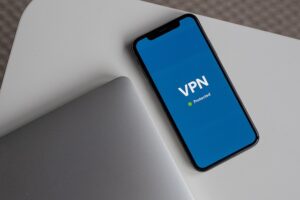Possible Cyber Threats That Prey on Those Using Public Wi-Fi

Can you imagine while you’re sitting at your favorite café, sipping on a latte while browsing the web on your laptop, suddenly your laptop goes crazy? The convenience of public Wi-Fi is undeniable, but lurking in the shadows are cyber threats just waiting to pounce on unsuspecting users. In this digital age, staying safe online is more important than ever. Those possible cyber threats often prey on those using public Wi-Fi without proper protection, such as VPNs and strong encryptions. But how can they really wreak havoc on your personal data? Let’s find out here.
Using a Premium VPN to Protect Your Device
 To protect yourself from all of these cyber threats, consider using a premium VPN service. The best vpn encrypts your internet connection, making it harder for hackers to access your data or inject malware into your system. But don’t go for a free service. Pay a little money so you can enjoy the extra features of a premium VPN subscription.
To protect yourself from all of these cyber threats, consider using a premium VPN service. The best vpn encrypts your internet connection, making it harder for hackers to access your data or inject malware into your system. But don’t go for a free service. Pay a little money so you can enjoy the extra features of a premium VPN subscription.
This subscription provides an extra layer of security by encrypting your internet connection and thoroughly masking your IP address. This helps protect your sensitive information from cyber threats such as Man-in-the-Middle attacks, Wi-Fi sniffing, rogue hotspots, and malware injection when using public Wi-Fi.
Wi-Fi Sniffing
Aside from MitM attacks, you may also face a cyber threat called Wi-Fi sniffing. Wi-Fi sniffing is a sneaky cyber threat that involves intercepting data transmitted over a Wi-Fi network. This technique allows hackers to capture sensitive information like passwords, emails, and credit card details without the user’s knowledge. Hackers use specialized tools to monitor network traffic and pick up unencrypted data packets passing through the airwaves. Once they have this information, they can use it for identity theft, financial fraud, or other malicious activities. It’s like eavesdropping on a private conversation without being detected.
Rogue Hotspots
Rogue hotspots are fake networks that mimic legitimate ones to lure unsuspecting users into connecting. Once connected, hackers can eavesdrop on your online activities, steal sensitive information like passwords or financial details, and even distribute malware to your device without you knowing. These malicious actors often target public places with high foot traffic where people are more likely to connect without second-guessing the network’s legitimacy. It’s essential to always verify the network name with staff or use cellular data instead of public Wi-Fi when in doubt.
Malware Injection
Last but not least, let’s talk about malware. Hackers use this technique to implant malicious software into your system without you even realizing it. Once injected, the malware can steal sensitive information that may often include passwords, credit card details, and even your personal data. So be very cautious of downloading any files or clicking on suspicious links or colorful pop-ups while connected to public Wi-Fi networks to avoid falling victim to malware injection.
Man-in-the-Middle (MitM) Attacks
 Ever heard of the Man-in-the-Middle (MitM) attack? This sneaky technique involves a cybercriminal intercepting communication between two parties without their knowledge. Imagine sending sensitive information over public Wi-Fi only for it to be intercepted by a malicious third party. Scary, right? During a MitM attack, hackers can eavesdrop on your online activity, including emails, passwords, and financial details.
Ever heard of the Man-in-the-Middle (MitM) attack? This sneaky technique involves a cybercriminal intercepting communication between two parties without their knowledge. Imagine sending sensitive information over public Wi-Fi only for it to be intercepted by a malicious third party. Scary, right? During a MitM attack, hackers can eavesdrop on your online activity, including emails, passwords, and financial details.
They may even alter the data being transmitted for their own gain. The worst part? Victims often have no idea they’re being targeted until it’s too late.…




